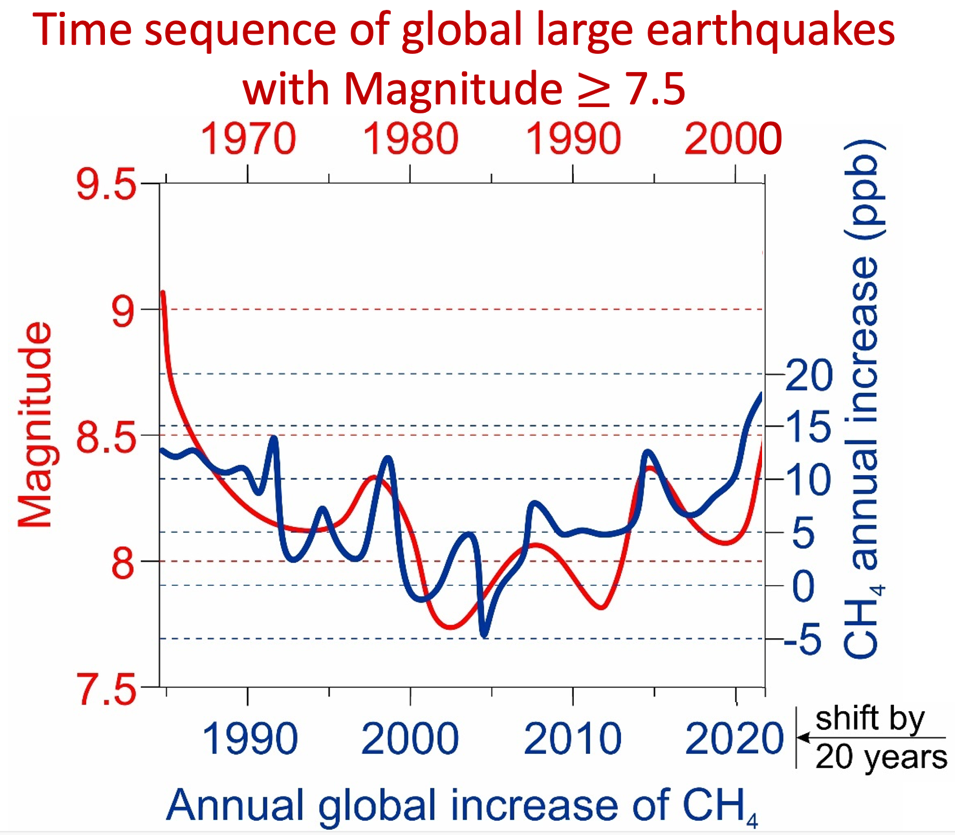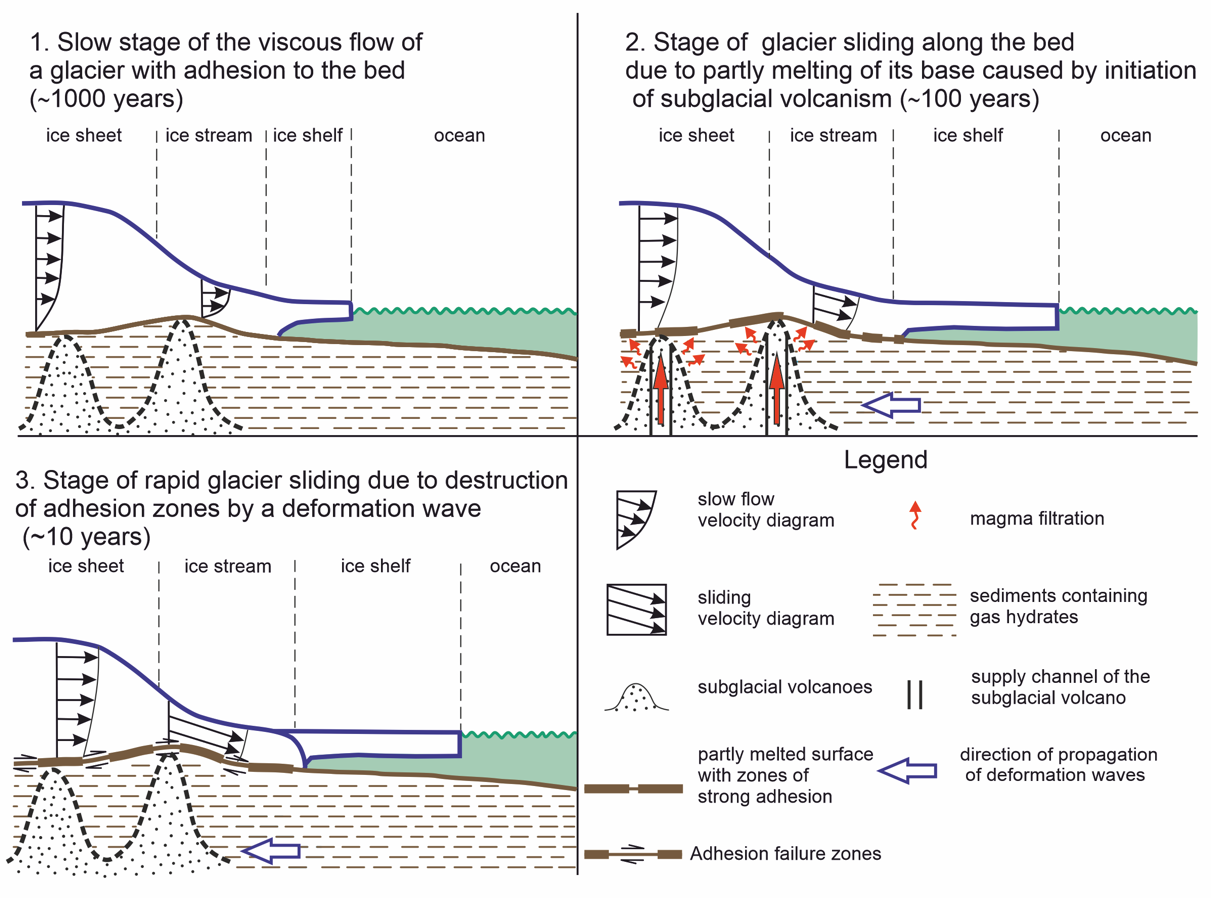A correlation is observed between changes in the level of Earth’s seismic activity and increments of the atmospheric methane concentration over the past 40 years.
Trigger mechanisms are proposed for methane emissions and glacier collapse in Polar Regions. These mechanisms are due to deformation waves caused by large earthquakes in subduction zones located near the Polar Regions: the Aleutian and Kuril–Kamchatka subduction zones, closest to the Arctic, and the Antarctica–Chilean and Tonga–Kermadec–Macquarie subduction zones. Disturbances of the lithosphere are transmitted over the distances of 3000–4000 km and more at a speed of about 100 km/year. Additional associated stresses come to the Arctic and Antarctica several decades after the occurrence of large earthquakes. In the Arctic zone, additional stresses affect the low-permeability structure of gas bearing sedimentary strata, causing increased methane emission and climate warming. In West Antarctica, deformation waves could trigger the acceleration and intensive collapse of West Antarctic glaciers, which has been observed since the 1970s. These waves are also capable of activating dormant volcanoes located under the sheet glaciers of West Antarctica, leading to an increase in heat flux, to the melting of ice at the glaciers’ base, and to their accelerated sliding towards the ocean, as is happening with the Thwaites and Pine Island glaciers. Numerical simulation was performed to the spreading of West Antarctica ice sheet under its own weight. It is shown that the runoff acceleration can be associated with the effect of slippage on the lower boundary of the glacier due to the increased heat flow. In turn, the heat flow increases due to the activity of one of the largest and least studied volcanic provinces on Earth. As a result, the grounding zone during the retreat of the Thwaites and Pine glaciers is no longer limited to underwater ridges, which can lead to an acceleration of their sliding into the sea up to the destruction of the entire West Antarctica ice sheet in a short time (years to decades). In this case, the height of the sea level rise can be about 4 meters. The results show the relationship between climate, glacier dynamics, sea level rise, geodynamics, and strong subduction earthquakes. The presented Holocene paleoclimate data, model and calculations show that there are natural causes of global warming, and the contribution of mankind to global warming may be insignificant. In this case, the entire green agenda of humanity with carbon landfills and huge investments, incl. in Russia in the reduction of carbon dioxide emissions is becoming ineffective.
Source: Lobkovsky, L.I.; Baranov, A.A.; Ramazanov, M.M.; Vladimirova, I.S.; Gabsatarov, Y.V.; Alekseev, D.A, Semiletov, I (2023) Large earthquakes in subduction zones around the Polar Regions as a possible reason for rapid climate warming in the Arctic and glacier’s collapse in West Antarctica. Geosciences, 13, (6), 171. DOI: 10.3390/geosciences13060171.



